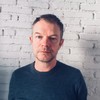This story appears in VICE Magazine's Burnout and Escapism Issue. Click HERE to subscribe.
AT LEAST WE BURNED OUT TOGETHERAt the end of 2017 I wrote a story for VICE about my struggle with anxiety for a week-long project about stress. It was based on the thesis that we were more stressed than ever, and I spent months experimenting with ways to cope, enlisting a team of health specialists and experts to do so.
Advertisement
I made a mistake. I thought that I had figured it out. I thought that—through a regimen of meditation and reflection and therapy—I might enter 2018 a more calm and centered person. And sure, there were many things I had learned, many ways I became stronger and more resilient. But this year would only test me further—knocking me off my feet in new ways both personally and professionally. The changes weren’t necessarily bad; in fact, some of them were the most beautiful and transformative shifts I’ve experienced. But I find myself, 12 months later, feeling just as fragile as ever in the face of uncertainty.This time, however, I also feel less alone. It wasn’t easy to share my struggle—especially on a platform that is open to millions of people—but doing so sent a signal to the people around me that my door had been cracked open.A ripple effect happens when you start to talk about your emotional health openly. Even a tiny window of vulnerability makes space for others to share their own stories, tend to their own raw wounds. So throughout this year, I had many conversations with my friends and family as we collectively looked for peace of mind. The conversations spanned a spectrum of topics, from antidepressants and therapy and magic mushrooms to labor unions and protests. And if there’s one thing I grasped this year more than ever before, it’s that mental and emotional health are not solely about the individual.
Advertisement
As Shayla Love describes in her piece on the limitations of self-care, we’re starting to recognize that all the yoga classes and meditation apps cannot solve for the larger societal structures we grapple with. A ten-minute breathing exercise cannot cancel out a 16-hour workday. Even a session with a therapist cannot, on its own, protect you from weathering, a term specific to the trauma faced by black Americans that George Johnson chronicles in his piece.As we face the turn of another year, it’s easy to feel burned out by or resigned to the economic instability, political theater, and societal disconnect around us. I often pause, overwhelmed and exhausted, and think, Is anybody happy anymore? But I’m also starting to see signs of light emerge from what last year felt like an endless downward spiral. There are young Americans eschewing Facebook and taking to the streets to push politicians into passing better healthcare policies. In the US, more women are now in elected political positions than ever before—more people that look like us, representing us. There are activists, as Marie Solis writes about in her piece, who are recognizing how to fulfill their own needs in order to fight for human rights.There is the art of daily life. As Colin Joyce joyfully explores in his work, ambient music can help us drown out some of the extraneous noise and leave our minds open to new ideas. I myself had the opportunity to write about a world in which urban and city planners are channeling their own design expertise to physically bring us together.
Advertisement
In this issue, we’ve continued to respect and acknowledge our aggregate trauma, whether it’s the subtle, everyday slights we silently bear or the larger structural inequities that we’ve inherited through generations. We’re also embracing the ways in which we’re learning to escape with, cope with, and directly dismantle those same barriers. In these pages you won’t find too much in the way of self-help or Band-Aids. Instead you will find brave, zany, personal, and rich stories that attempt to autopsy burnout and stress and provide meaningful paths forward. You will find, maybe, your own reflection in some of the words and images in front of you. And that, I think, might be the most important takeaway of all. —Ankita Rao, Special-Projects Editor
THE PSYCHOACTIVE ANTIDOTEPeople use drugs for many different reasons: to enhance, to medicate, or to step away from everyday existence. They seek refuge from anguish in heroin, blot out anxiety with Xanax, and boost their confidence with cocaine. They relax after work with a joint, dance all night with MDMA, and explore their mind with DMT.A look at the psychoactive substances people use and how they use them provides a window into the wants and needs of a society. There is an element of escapism in all altered states, but as society changes, so do the motivations and means of escape.As we face increasing burnout from fractured work and social lives, the need to escape and the need to chemically control the daily grind have become two sides of the same coin. Drugs are used as a distraction from the constant pressure of debt, insecurity, and an uncertain future.
Advertisement
Since industrialization, drugs have been used not just to escape the working day, but to manage it, to switch between toil and pleasure. With cocaine tonics via Coca-Cola, chloroform for exhaustion, and amphetamines for long shifts, humans have intoxicated themselves to control and optimize their time: to wake up, to work, to sleep, and to stretch out the weekend.As the drug historian Mike Jay put it to me: “When you work for the machine, drugs can help get you back in the driving seat—or feel you are at least. With today’s expanded menu of available drugs, this ability to tweak our metabolisms and wake-sleep cycles, to stay on the treadmill and make the most of our downtime, has grown. It’s not a new tendency, but we’re finding more powerful and calibrated ways to exploit it.”Yet now, increasingly enclosed by our screen-dominated life, and despite the hyperconnectivity of the internet, there is a looming sense of dislocation from nature, each other, and ourselves. For some, the functional escapism of the past is not the antidote they need.During his exploration of modern hallucinogenic drug culture for this issue, the journalist and author Mike Power discovered there are signs that—outside of corporate culture and the science labs—drug escapism is experiencing a psychedelic renaissance. Amid the claustrophobia of modern life, he suggests a new generation is taking drugs such as LSD, magic mushrooms, and DMT in order to reboot themselves, to step away from modern life, to explore and be happy.
In this issue, we have drilled down into the current psychedelic scene even further: We speak to those who are using psychedelics as a form of self-medication to deal with mental health problems, through a network of underground psychedelic therapists or just totally DIY. One contributor, a woman who had decided she needed some profound direction, wrote about departing on an inner journey using the illegal Amazonian medicine ayahuasca, in a village hall in the middle of the English countryside. We also take a look at the rise of psychedelic music festivals and the influence hallucinogens have had and are still having on music.In a world where people can feel like cogs in a wheel, using drugs to escape—whether in positive or negative ways—has always been an understandable response to life. Going into an altered state, the act of getting intoxicated, is an essential part of life on earth for millions of people, and it has always been this way. Yet as we approach 2019, the game is rapidly changing. Burnout is not just about money and work, it’s about a creeping estrangement from nature, disconnection from each other, living the lives of others through the cold glow of a screen.No wonder, as our lives become more abstract, that the more functional highs and lows of stimulants and sedatives are not doing it for some. Perhaps there is something to be said for taking a journey on a sidewinder, away from reality—whatever that is—and return with something new. —Max Daly, Global Drugs Editor


